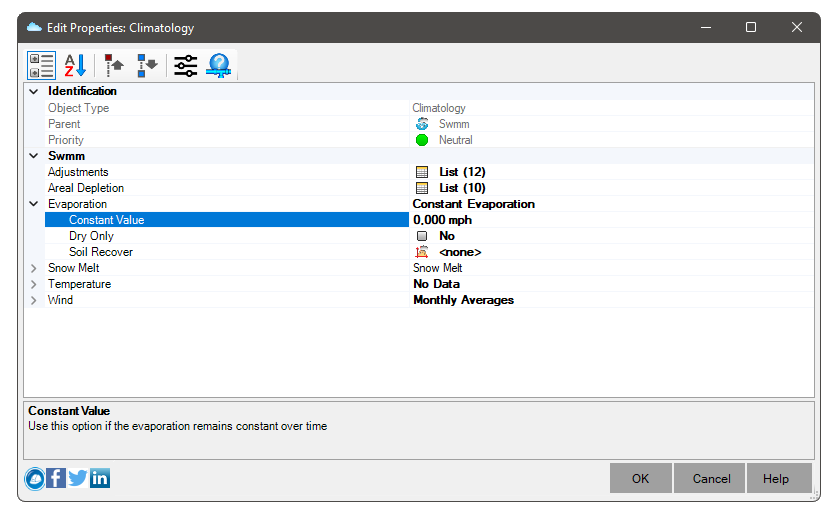SWMM - Evaporation
Gives potential evaporation rates for a study area. There are five options for specifying these fees:
- Constant value - Use this option if evaporation remains constant over time. Enter the value in the provided edit box
- Time Series - select this option if evaporation rates are specified in a time series.
Note that for each date specified in the time series, the evaporation rate remains constant at the given value for that date until the next date in the series is reached (i.e. interpolation is not used in the series)
- Climate File - This choice indicates that daily evaporation rates will be read from the same Climate File
(informed in SWMM / Climatology / Temperature
- Calculated from temperatures - The Hargreaves method will be used to calculate daily evaporation rates from the daily record of air temperature
contained in the external Climate File specified in the Temperature page of the dialog.
This method also uses the site's latitude, which can be entered on the Snow Melt page of the dialog, even if snow melt is not being simulated.
- Monthly Averages - Use this option to provide an average rate for each month of the year. Enter the value for each month in the provided data grid. Note that the rates remain constant each month
In addition, the user can specify an optional Monthly Soil Recovery Pattern.
This is a weather pattern whose factors adjust the rate at which infiltration capacity is recovered during periods without precipitation.
It is also possible to specify whether evaporation occurs only in periods of drought. To do so, mark the option Evaporates only during dry periods as true:

Applies to all subcatchments for any choice of infiltration method.
For example, if the normal seepage recovery rate were 1% over a specific time period and a default factor of 0.8 applied to that period, then the actual recovery rate would be 0.8%.
The Monthly Soil Recovery Pattern allows you to consider seasonal soil drying rates.
In principle, variation in standard factors should reflect variation in evaporation rates, but may be influenced by other factors such as seasonal groundwater levels.

